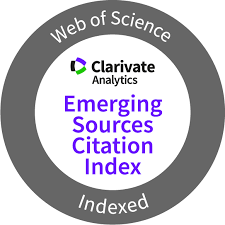Characterization of the water resources behaviour in a climate change context under indicator
Keywords:
Climate change, Water scarcity indicators, Water resources systemAbstract
The availability of water resources could be affected by climate change and with it the degree with which the demands are met. To assess the degree with which the demands are met, indicators that allow identifying water scarcity problems are frequently used. These indicators have been generally developed for hydrological planning analyses in the short and medium term where the effects of climate change are not relevant. Therefore, the capability of the indicators: demand-satisfaction index (I1) and demand-reliability index (I2) in this paper it is analyzed. These indicators were developed to be uses in the short term, and here we focus on their use in systems exposed to climate change (long term conditions). This analysis was performed through the application of these indicators in three Spanish basins (Guadalquivir, Duero and Ebro) and under several reduction levels of the streamflows due to climate change. It was determined that I2 is not capable of capturing the effects of the variability of such streamflows. A new indicator Ip3 was identified, so that keeping the same criteria as I2 to its determination, it is capable of determining the best level with which the demands should be met taking into account the variability of the streamflows. This new indicator was selected out of three proposed indicators.
Downloads
References
[2] IPCC, “Cambio climático 2007: Mitigación del Cambio climático. Contribución del Grupo de Trabajo III al Cuarto Informe de Evalluación del Panel Interguberamental sobre Cambio Climático,” 2007.
[3] L. Garrote, B. De Lama, and F. Martín-Carrasco, “Previsiones para España según los últimos estudios de cambio climático,” in El cambio climático en España y sus consecuencias en el sector agua, A.-U. R. J. Carlos, Ed. Universidad Rey Juan Carlos, 2008, pp. 3–15.
[4] C. a. Sullivan, “Quantifying water vulnerability: a multi-dimensional approach,” Stochastic Environmental Research and Risk Assessment, vol. 25, no. 4, pp. 627–640, Jul. 2010.
[5] G. Jubeh and Z. Mimi, “Governance and Climate Vulnerability Index,” Water Resources Management, vol. 26, no. 14, pp. 4147–4162, Sep. 2012.
[6] F. Martin-Carrasco, L. Garrote, A. Iglesias, and L. Mediero, “Diagnosing Causes of Water Scarcity in Complex Water Resources Systems and Identifying Risk Management Actions,” Water Resources Management, Jul. 2012.
[7] F. Martín-Carrasco and L. Garrote, “Drought-induced water scarcity in water resources systems,” in Vasiliev, O.F., van Gelder, P.H.A.J.M., Plate, E.J., Bolgov, M.V. (Eds.), Extreme Hydrological Events: New Concepts for Security – ISBN 978- 1-4020-5739-7. NATO Science Series, vol. 78, Part 4. pp 301– 311. DOI: 10.1007/978-1-4020-5741-0_2., 2007, pp. 301–311.
[8] J. Andreu, J. Capilla, and E. Sanchis, “AQUATOOL, a generalized decision-support system for water-resources planning and operational management,” Journal of Hydrology, vol. 177, no. 3–4, pp. 269–291, Apr. 1996.
[9] T. Estrela and L. Quintas, “El sistema integrad de modelización precipitación escorrentía (SIMPA).,” Revista de Ingeniería Civil, vol. N°10, pp. 43–52. CEDEX Ministerio de Fomento, 1996.
[10] MMARM, Ministerio de Medio Ambiente, y Medio Rural y Marino, ORDEN ARM/2656/2008: Instrucción de Planificación Hidrológica. 2008.
[11] CEDEX, “Evaluación del Impacto del Cambio Climático en los Recursos Hídricos en régimen natural - Resumen Ejecutivo. Ministerio de Medio Ambiente, Medio Rural y Marino, Madrid, España.,” 2011.
[12] PRUDENCE, “Prediction of regional scenarios and uncertainties for defining European climate change risks and effects. Project EKV2-CT2001-00132 in the EU 5th Framework program for energy, environment and sustainable development,” 2007.


















